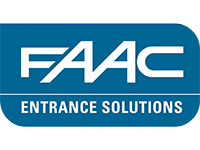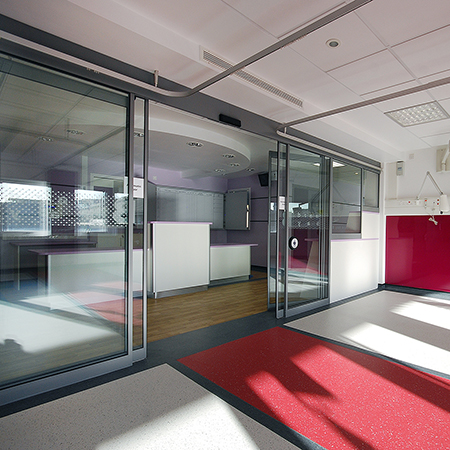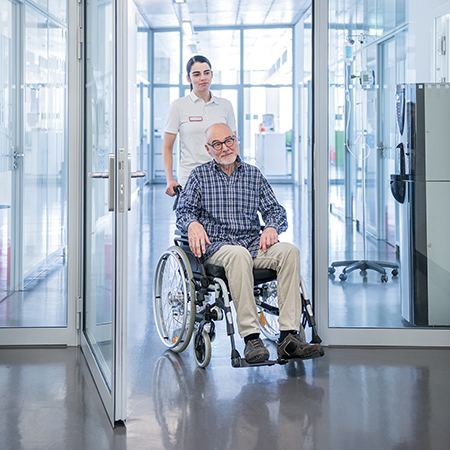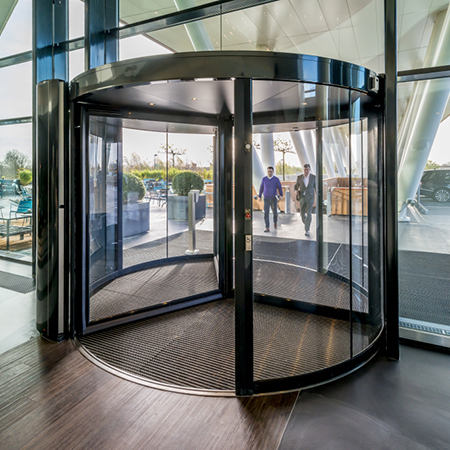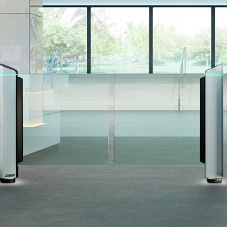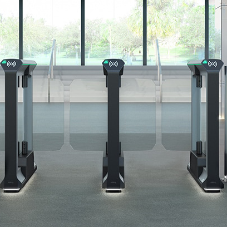A blog written by FAAC Entrance Solutions
The tallest ever recorded person measured a staggering 2.72m in 1940. Fast Forward 80 years and the tallest recorded person is 2.52m tall. The average height of the average male and female person (in 2018) was 1.75m and 1.61m respectively. Then why is there such a huge demand for extremely tall revolving and associated swing pass doors?
It is said that the main entrance doors are the first and last things you see and remember when entering or leaving a building. However, if the large, tall doors don’t function properly, what would you remember then? The design and aesthetics or how you struggled to get in and out the building?
Here are some thoughts and reasons why tall doors (above 3000mm) can cause problems:
Design
Very tall doors will usually exceed most manufacturer's standards, which means desktop studies will need to be performed to ensure the door will work and all safety requirements can still be achieved.
Cost
Invariably, costs will increase markedly. Additional research into whether the system is feasible and safe and additional material and installation costs all add up. It is also worth considering that you will be limiting yours and your clients’ choice as who to choose for this door, as only a very few manufacturers can accommodate extreme sized doors.
Installation
With extreme height revolving doors, delivery methods may have to change to a larger articulated lorry instead of the usual hi-ab delivery as well as requiring special instruction for unloading and moving into place.
Site areas are often congested, so to allow smooth deliveries road closures may be necessary, as well as obtaining special road licences to park on main roads, especially in urban/metropolitan areas.
Safety
By far and away the most important factor when considering extreme height doors is safety. We have to ensure that they adhere to BS EN 16005. The safety requirements on a revolving door are numerous and to increase the heights far above the maximum entails utilising laser sensors in certain areas so no contact is made to the user.
One of the critical safety requirements is the emergency stopping of a revolving door. When this is engaged the door must stop dead within 5.7° of rotation. To combat this the rotation of an extreme height door will be reduced significantly. This will, in turn, reduce the inertia built up by a rotating door, thus, meaning it will stop dead within the set safety distance.
The major drawback with this is that with a much slower rotation, this will mean a significant impact on traffic throughput. If this is applied to, for example, a high end office tower, then users will not be able to utilise these doors properly during peak periods causing potential bottlenecking or users opting to use the pass door(s), defeating the whole purpose of a revolving door and its energy saving properties.
When considering extreme height swing doors, this poses an altogether different problem in that the door can become inherently dangerous to users when wind loads increase. A bigger swing door will mean more surface area for the wind to make contact with it. This is known as the “sail effect”. The same principle applies to sails on a ship – the bigger the sail, the more wind makes contact with it, the faster the ship will propel.
Extreme sized swing doors will also be much heavier. Couple this with high winds and you have a recipe for disaster. Very few automatic door operators will be able to operate the doors and with the weight, the door will be slow moving.
When high winds are involved, this can cause the door to move even slower (when going against the wind) or not function properly when the wind is trying to open/close the door faster than it is intended to.
Taking all this into consideration, the kinetic energy built up can cause issues for users of these doors as the safety may be compromised and may even strike the user.
Maintenance
Associated with the above reasons, additional items such as servicing costs, cleaning and maintenance and repair costs all become more expensive with these types of doors, as things such as scaffolding might be required for otherwise simple tasks.
If there is a desire to specify an extremely high door please use extreme caution and take all the above points into consideration. In the words of Steve Jobs “Design is not just what it looks like or what it feels like. Design is how it works”.
If it doesn’t work properly is it good design?
Specifying Automatic Doors: Is Bigger Always Better? [Blog]
| T | +44 (0)333 006 3443 |
|---|---|
| E | enquiries.esuk@faactechnologies.com |
| W | Visit FAAC Entrance Solutions's website |
| Pedestrian Door Solutions, Unit 9, Windmill Business Village, Sunbury-on-Thames, Middlesex, TW16 7DY, UK |

